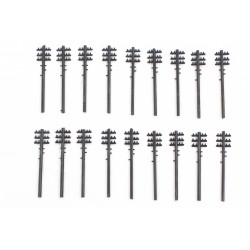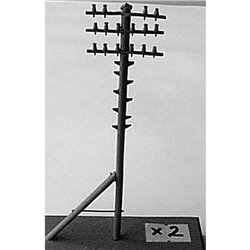Static grass puffer bottles work by manually charging model grass fibres with static electricity. When the charged...
No products
Product successfully added to your shopping cart
There are 0 items in your cart. There is 1 item in your cart.
Search Tips
What clearance is required when telegraph lines cross railways?
When telegraph lines cross railways, a certain clearance is required to ensure the safety and proper functioning of both the railway and the telegraph lines. This clearance is known as the "line clearance" or "wire clearance".
The specific clearance required can vary depending on the country and the regulations in place. In the United Kingdom, for example, the line clearance for telegraph lines crossing railways is typically 5.5 meters (18 feet) above the top of the rail.
This clearance is necessary to prevent any interference between the telegraph lines and the trains passing underneath. It allows for the safe passage of the trains without any risk of the telegraph lines coming into contact with the trains or any of their equipment.
It is important to note that these clearances are established to ensure the safety and reliability of both the railway and the telegraph lines. Failure to maintain the required clearance can result in accidents, damage to equipment, and disruption of communication.
Click here to receive the tips weekly in your mailbox. You can unsubscribe at any time.










